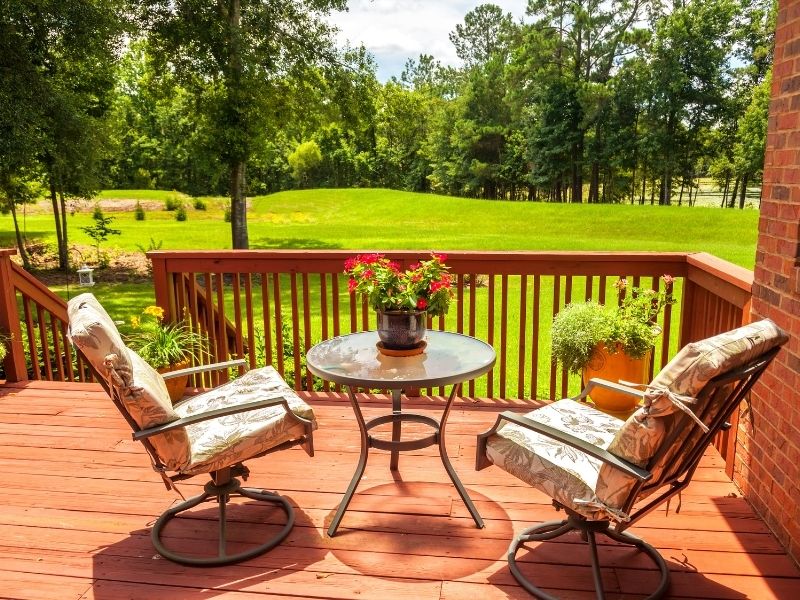Consider yourself lucky if your home has a deck. When you have a deck, it serves as the ideal space to unwind and enjoy the beauty of the outdoors. But there are times, naturally, when your deck needs repair.
For most homeowners, deck maintenance mainly focuses on the decorative aspect. Sadly, decks undergo constant exposure to the elements, which leads to their deterioration over time that can affect safety. With this in mind, you must regularly inspect your deck to detect any potential problems and fix them right away. Additionally, you also want to keep in mind that if those repairs end up being more than the cost of a new deck in itself, you’re going to be financially better off hiring a deck builder to construct a completely new deck.
Some usual deck problems you might later encounter include replacing loose rails or floorboards with damage, securing screws, or removing rusty nails. If you’re eager to know more about deck repair Colorado Springs—or any other area, for that matter—checking out reliable service providers would greatly help.
Apart from doing simple jobs like repainting or refinishing your deck, if you want to ensure that your deck stays in good shape for years to come, here are telltale signs that your deck needs repairs.
Your Guide to Knowing When Your Deck Needs Repairs

Rotting support posts and beams.
When the wood starts to rot, it’s not a good sign, regardless of what part of the house it affects. If you overlook this issue, the rot will cause significant damage, affecting the overall structural integrity of your home.
Although the latest houses today have decks on concrete footings, older decks might have support posts that rest directly on the ground. Always remember that soil is rarely dry entirely, and if you have raw or pressure-treated wood support posts, they’ll soak up the moisture in the ground. Constant exposure of timber to moisture will lead to rot, so it’s best to regularly inspect the deck posts every few months or so.
Erosion around the deck posts.
Erosion can affect both wooden and concrete deck footings. Take note that soil erosion occurs when snowmelt and rainwater wash away the soil that supports the deck posts and bases. Once the lower section of the post is exposed, it can cause instability of the deck.
Throughout the years, the slope of your yard will naturally change. The addition or removal of planting beds can hasten this change. Once you notice pooling of water in your yard or a small river runs under your deck after a storm, call a professional to fix damages on your deck and the drainage.
Heaving or dropping footings.
Even if you have concrete footings, they might end up with issues. When the original footings were hastily poured directly on unstable soil or soil that has shifted over time, the concrete will end up with cracks or eventually drop. The constant cycle of freezing and thawing during the cold months could also take its toll on concrete deck footings and contribute to your deck’s weakened structural integrity.
Loose rails.
When the deck railings seem loose, it can pose a safety hazard to your family. Although it’s not likely to cause the deck to collapse, any loose railing is a clear sign that your deck requires immediate attention.
Carefully inspect the railings of your deck, especially in areas below any roof overhangs or where your family spends most of the time. If you can detect railing problems early on, a deck repair job is usually enough. However, if the deterioration is already extensive, affecting the deck’s structural integrity, the best option is a complete replacement.
Gaping distance between the house and deck.
The ledger boards are responsible for attaching a deck to the house. Once the boards end up with damage, the weight of the deck and gravity will make the structure lean away from the house’s structure.
Once your deck starts to lean, it poses a safety hazard since a family member might trip on the gap or the structure will eventually collapse. Additionally, a gap between the deck and your house will allow water to infiltrate the surface boards, posts, and framework, leading to rot.
Cracks or splinters on the deck boards.
A few deck boards with cracks or splinters aren’t an issue for concern, since a professional can readily replace them. Unfortunately, if almost every board shows signs of deterioration, it might be time for a new deck.
Wood won’t last forever. Although regular painting, staining, and sealing can significantly help lengthen the lifespan of a wooden deck, the elements will sooner or later take their toll.
Extensive stains and decorations.
While signs of fading or discoloration won’t affect the deck, widespread discoloration might be a sign of a severe underlying problem. Substances such as cleaning chemicals, cooking grease, and automotive fluids can corrode the finish and material of the deck over time.
In conclusion.
The deck is a special space in your yard to enjoy the outdoors with family or friends. As a retreat where you can unwind or engage in conversations with loved ones, your deck should be safe and structurally sound at all times.
Make sure to watch for these warning signs for timely repairs to keep your deck in good shape for years to come. If you have any questions or suggestions, we always love to hear from you in the comments below. Also below are links to more fantastic articles about ALL things DESIGN for your home or business.
Images Courtesy of Canva.
Other Posts You Might Enjoy:
5 Ways to Make your Deck Foundation Last Longer
Essential Facts for Installing a Deck for Your Pool





